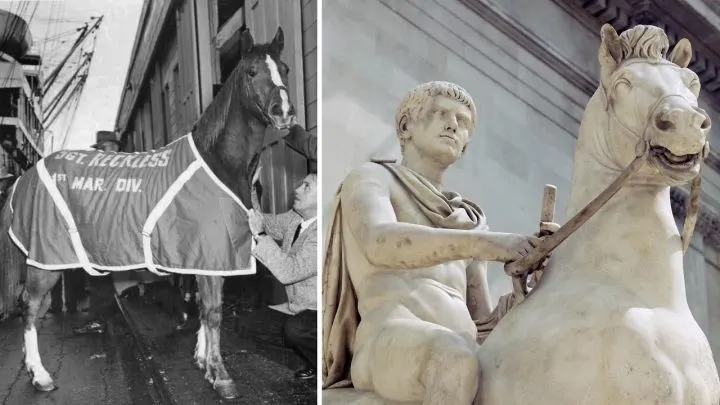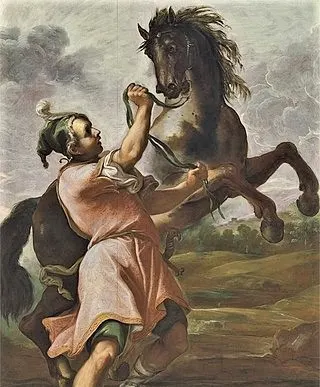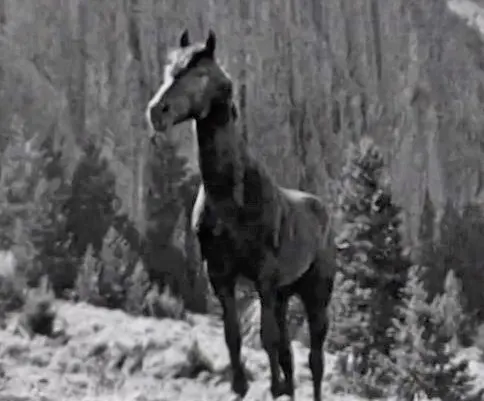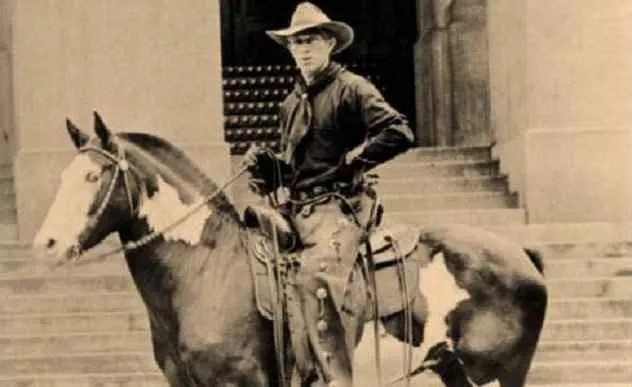
Those close to horses know that they all have individual personalities and quirky traits that make them such lovable animals. However, every now and again, a particularly eccentric horse appears that wows the world with its unique character.
While many of these historical accounts are based on legends and myths, they emphasize the important role horses still play in our society.
Let us entertain you with the strangest and most bizarre horse stories that made their way into the history books!
The Horse That Almost Became a Consul

Incitatus was the favorite horse of Caligula, the supposedly mad emperor of Rome (r. 37–41 AD). His name befittingly means “swift” or “at full gallop” in Latin, as he was a prized racehorse of the royal stables.
According to Museum Hack, Caligula loved his horse more than he loved most people. He would invite Incitatus to dinner, have servants tend to him, and drink to his health from a golden cup. He even fed his beloved horse oats mixed with gold flakes!
Incitatus’ stable and tack were as luxurious as his lifestyle. His stall was pure marble, his manger ivory, and his collar was adorned with precious gemstones.
According to Roman historian Suetonius, Caligula was planning to make Incitatus a consul in the Roman Senate. He has previously made him a priest and only his assassination in 41 AD prevented Caligula from giving Incitatus his next promotion.
A Legendary Horse With a Bizarre Phobia

Included in our list of the most famous horses in history, Bucephalus was the war mount of the Macedonian conqueror Alexander the Great. He was named after the brand he wore on his hauch which depicted the head of an ox.
Historical accounts describe Bucephalus as a large black stallion with a massive head and a white star. They also state that his breeding was of the “best Thessalian strain”.
According to Greek philosopher and historian Plutarch, Alexander acquired Bucephalus when he was just 12 or 13 years old.
The horse was offered to his father King Philip II wild and unbroken, for the astronomical price of 13 talents.
Uninterested, the King rejected the deal, but Alexander offered to tame Bucephalus if he could keep him.
Given the chance, the boy spoke quietly to the horse and turned him toward the sun to hide his shadow, which Bucephalus was famously paranoid of.
To everyone’s amazement, Alexander then rode away on Bucephalus, winning ownership of the horse.
The two fought many battles together during Alexander’s conquest of the world. Eventually, Bucephalus died in the battle of the Hydaspes in 326 BC, prompting Alexander to found the city of Bucephala in his honor.
The Mythical Founding of the Arabian Horse
There are many legends surrounding the origins of the Arabian horse, one of the world’s oldest and most beautiful horse breeds. One such legend tells the story of how Muhammad, founder of the Islamic religion, selected the foundation mares of the breed.
Wanting only his best mares to have the honor, Muhammad decided to test the courage and loyalty of his horses.
After a long journey through the Arabian desert, he turned his horses loose right before an oasis and let them race to the water.
However, before they reached the shores, Muhammad gave out a call for the horses to return. Only five mares answered his call, who then became the founders of the five strains of the Arabian breed.
Although no concrete evidence exists that these mares existed, some modern breeders claim their horses descend from the five original strains.
The Decorated War Horse That Loved Scrambled Eggs and Beer

In the Korean War that raged from 1950-1953, a girl tragically lost her leg by stepping on a land mine. To raise money for a prosthetic limb, her brother sold a chestnut Mongolian mare called Flame-in-the-Morning to the local U.S. Marines for $250.
The Marines named the horse Reckless and enlisted her to carry ammunition to the front lines. Through her tireless work and bravery in the face of cannons and gunfire, Reckless soon became dear to her fellow Marines.
A true war horse at heart, Reckless could even drop to the ground when instructed and avoid trip wires. During the Battle of Outpost Vegas, she delivered 9,000 pounds (4,100 kilograms) of ammunition to the front lines, making 51 roundtrips in a single day!
Reckless became so close with the Marines in her unit that she even shared their provisions. The mare would hang out with the soldiers eating scrambled eggs and pudding and drinking beer and soda.
To top it all off, she was even promoted to Staff Sergeant for her service!
Sergeant Reckless was eventually retired at Camp Pendleton in California. In honor of her heroic deeds, a bronze statue of her was erected at the National Museum of the Marine Corps in Triangle, Virginia.
The Killer Stallion That Became a Movie Star

In the world of movies and television, the early 20th century was the era of Wonder Horses. Among the famous equine stars that received the honorable title was the killer stallion Rex.
Foaled in 1915 in Texas, Rex was abused as a colt and eventually sold to the Colorado Detention Home as a breeding stallion. One day, a student took him out for a ride and never came back. They later found his body near a stream and concluded that he had been dragged to death.
Consequently, Rex was deemed a killer and put into solitary confinement for 2 years. However, his luck turned when Hollywood horse trainers Chick Morrison and Jack Lindell picked him to star in The King of the Wild Horses (1923).
In the coming years, Rex starred in a total of 19 films and appeared anonymously in numerous others. Despite spending his days working with people, he never lost his wild and untamed nature, which made him so authentic in movies.
In fact, he was even known for deliberately attaching members of the cast and crew on set. Only former rodeo star and actor Yakima Canutt was bold enough to work “up close” with the stallion, which nearly cost him his life on one occasion! (Source: “Hollywood Hoofbeats” by Petrine Day Mitchum)
The Horse That Walked Around the United States

Pinto the “Wonder Horse” is the only horse to date ever to have walked the entire length of the United States. His journey took place between 1912 and 1915, spanning an incredible 20,352 miles (32,753 kilometers).
Pinto’s rider was professional horseman George Beck, who led a small group of riders called the Overland Westerners. The group planned to finish their historic ride at the 1915 World’s Fair in San Francisco in the hope of instant fame and fortune.
To their disappointment, the journey wasn’t as glorious as they had hoped. Throughout their ride, the group was mostly hungry, cold, and undoubtedly broke.
Occasionally, Beck would earn them a little money by riding Pinto in shows or trading other horses for provisions.
When the group did arrive in San Francisco three years later, their reception was equally as depressing. No one was willing to write about their story, and so the Overland Westerners never rose to fame.
Had they lived a hundred years later, their journey would’ve surely gone viral on social media! (Source: List Verse)
The Talking Horses of Elberfeld

Some of you might have heard of Clever Hans, the Orlov Trotter that could supposedly read, spell, count, and tell the time.
In truth, however, he was an extremely sensitive horse who reacted to his owner’s physical cues without him knowing.
After his owner died, Clever Hans was passed on to a scientist named Karl Krall. He already owned several horses that could read and count like Hans and even speak. Together, they became known as the Talking Horses of Elberfeld.
One of the horses, an Arabian colt named Muhamed, was famous for his ability to calculate the cube roots of numbers.
Each time he was asked a question, he would paw the answer with his hooves. Not only that, he even beat out the numbers on both sides of the decimal point with two separate hooves!
Muhamed would also let Krall know if one of the grooms was abusive towards the horses or scold his companions for being too lazy.
Unfortunately, once World War I started, Krall had to let go of his beloved horses. No one knows where any of these horses went afterward, but Muhamed supposedly became a working animal (source: List Verse)





